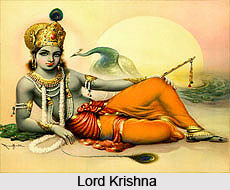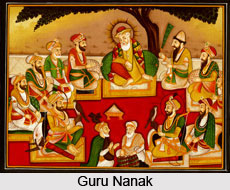 The art treasure of India is one of the best in the world. They include 4000 years of fine paintings, life size statuette and many types of images of Buddha. They also include nicely decorated temples carved into hard rocks, monuments and structures with largely sculptured towers, graceful mosques, tombs and palaces, all ornamented with precious and delicate art works. Archaeologists have unearthed the ruined cities from the site of Harappan Civilization during 2000 BC. The paintings and designs that have been discovered portray the richness in Indian culture.
The art treasure of India is one of the best in the world. They include 4000 years of fine paintings, life size statuette and many types of images of Buddha. They also include nicely decorated temples carved into hard rocks, monuments and structures with largely sculptured towers, graceful mosques, tombs and palaces, all ornamented with precious and delicate art works. Archaeologists have unearthed the ruined cities from the site of Harappan Civilization during 2000 BC. The paintings and designs that have been discovered portray the richness in Indian culture.
The culture of India is one of the oldest known to humanity. The most prominent part of Indian art culture is the strong influence of folk art and idioms. Indian paintings are characterized by moods, colour and lifestyle.
History of Religious Paintings in India
The roots of Indian paintings date back to the Indus Valley Civilization. Paintings on pottery reflect the keenness among the Indus Valley people. The artistic brilliance of people during those periods is evident from the paintings of Ajanta and Ellora. Overcoming the entire tough situation and demanding weather conditions the paintings and the art forms have survived a long period of time.
Indian paintings have come a long way from the extended mural surface to the miniature dimension of the manuscript. It then spread to the western part of the country and is evident in many illuminated manuscripts.
The court of Akbar was headed by the artist from Persia, but the repertoire of Mughal paintings is not a provincial school of Persian paintings. Each of the paintings was joint effort of Persian and Indian artists. Akbar even commissioned professional people for the illustration and translation of Indian text like the Mahabharata and Ramayana. Rajput paintings present a line and colour of great legends and myths of the land, the story of Krishna and Rama, of Gita Govinda and Bhagvat Gita.
Almost all the Mughal emperors of India between 1570 and 1750 employed large number of Muslims and Hindu painters. The Muslims paintings mainly used the bright colours made of powdered minerals.  Hindu painters used colours made of animal and vegetable products. Mughal artists mainly liked he naturalism in these miniatures and made their pictures as real as possible. Animal and human portrait became a trademark symbol, but there were artists who loved to depict scene from daily life.
Hindu painters used colours made of animal and vegetable products. Mughal artists mainly liked he naturalism in these miniatures and made their pictures as real as possible. Animal and human portrait became a trademark symbol, but there were artists who loved to depict scene from daily life.
Rajput painting has its own appeal and aura. These Rajput Paintings have a traditional approach and deals with Indian epics, romantic Vaishanava literature and musical codes from Raginis and Ragas. It is said that the Rajput painting is sensitive, reticent and tender. It reflects the self-control and serenity of Indian life. It shows close association of art with religion.
The Rajasthani School of art flourished in Bundi, Bikener, Mewar, Jodhpur, Jaisalmer and Jaipur. Most themes of the school were selected from the selected areas like Krishna Lila, Ram Lila and Nayika bheda.



















